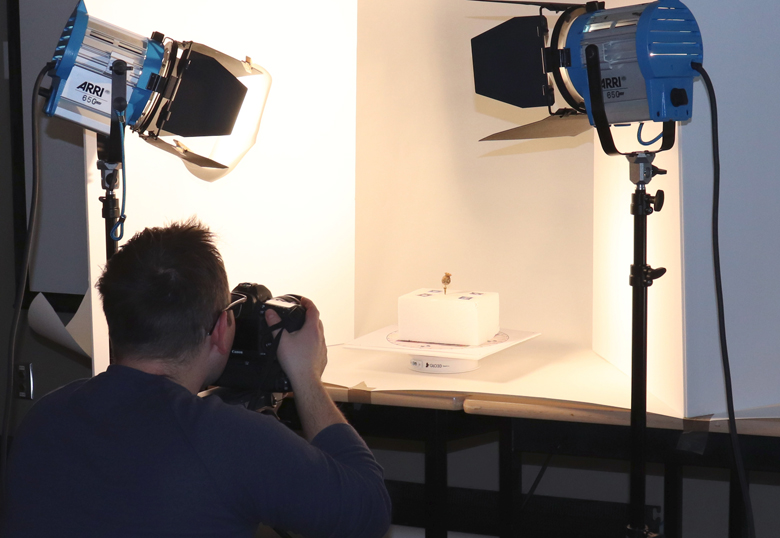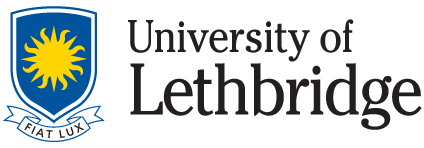A team of University of Lethbridge researchers and Blackfoot Elders will soon embark on an ambitious project that will provide immediate virtual access to historical Blackfoot objects held in museums, thanks to federal funding from the New Frontiers in Research Fund.
The U of L researchers, led by Christine Clark (BFA ’10, MFA ’14), an assistant professor of New Media, and including Dr. Josie Mills, director and curator of the U of L Art Gallery, Danielle Heavy Head, Blackfoot Digital Library liaison, Jackson 2Bears, U of L art studio professor, and Marcus Dostie, U of L geography instructor, will create extraordinarily detailed 3D models of non-sacred Blackfoot objects held in British museums. Their collaborators in England include Louisa Minkin, MA Fine Art course leader at Central Saint Martins, Ian Dawson, co-director of the Critical Practices Research Group at Winchester School of Art, and Andy Jones, archaeology professor, University of Southampton.

In order to adhere to their protocols and priorities, the project will be directed by Blackfoot Elders. Blackfoot approaches to knowledge emphasize the importance of caring for and sharing knowledge. The digital objects will be linked to people living in Treaty 7 territory through the Blackfoot Digital Library website, exhibitions at the U of L Art Gallery and live events, such as beading workshops.
The project is not focused on sacred objects nor on repatriation - the return of objects. Repatriation claims by Blackfoot elders focus on objects that would be returned and put back into use and as a result, these claims focus on sacred objects, such as ceremonial bundles. Mills explains “Our goal is to support sharing knowledge about how Blackfoot objects were made and to allow young artists to learn about historical techniques and materials. We will make images of everyday items which we can share with a wide audience because these do not have protocol restrictions.”
“This funding will allow us to study emerging technologies from a Blackfoot perspective. Imaging the artifacts in England is just the start; the biggest challenge is what we do with the resulting digital models,” says Clark. “We want to design media that reunites the objects with their traditional knowledge and supports the needs of the community, even in places where there isn’t high-speed internet access.”
“The importance of this project is huge for the Blackfoot Digital Library, as well as the Blackfoot community,” says Heavy Head. “These models are going to be freely available to our local artists. Many like to do traditional crafts like making beaded outfits and moccasins. This project allows them to examine the item closely, figure out how things were made back then and eventually be able to use those techniques in their contemporary pieces. These kinds of projects help us relearn, rediscover and re-ignite ceremony into the collective consciousness of our community.”
After creating detailed digital models of Blackfoot artifacts, the researchers will use digital tools, art-based public engagement and hyperlocal network technologies (for areas with limited access to high-speed Internet) to allow Blackfoot people to have immediate access and interact with the historical objects and their associated knowledge.
The research project begins with a trip to England with Blackfoot Elders and students to produce digital images of non-sacred objects in the British Museum, The Museum of Archaeology and Anthropology in Cambridge, and the Horniman Museum in London. To get an idea of some of the objects in the collections, read this article from the Horniman Museum & Gardens blog.
The research team will then produce web-based prototypes featuring the digital models to reunite the objects with their culture. In the final phases, the researchers will ensure the objects become part of the Blackfoot Digital Library website, as well as organize exhibitions and public programming to engage people with the knowledge held by the objects. Participants in the project will gain skills in digital media technologies—an area that needs more Indigenous voices. Indigenous youth will be involved in multifaceted workshops directly connected to their culture, creating an entry point for further learning and engagement.
“I’m excited about the professional development opportunities for our students,” says Mills. “This project will build bridges between Indigenous and non-Indigenous people and perspectives. We will be able to hire Blackfoot students to deliver programs in Lethbridge and on the Kainai, Piikani and Siksika reserves.”
The New Frontiers in Research Fund supports high-risk, high-reward and interdisciplinary research to help Canadian researchers make the next great discoveries in their fields.
